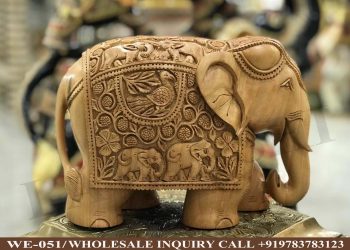Best Gifting,Corporate Gifts, devi, festive decor, For Home, gift articles, godess, good lucks, hand painted, Home decor, Home decor Handicrafts, Home decoration Online,living room decorative,Candle Stand,Fastive Décor
| The wooden painting of Nataraja, also known as the Dancing Shiva, is a captivating depiction of one of the most iconic and revered figures in Hindu mythology. The wooden sculpture or painting of Nataraja portrays Lord Shiva in a dynamic dance posture, symbolizing the eternal cycle of creation, preservation, and destruction.The Nataraja artwork showcases Lord Shiva with multiple arms, each adorned with symbolic elements. In one hand, he holds the damaru (a small drum), representing the rhythm of the universe. Another hand holds a flame, signifying the transformative power of fire. The other hands are positioned in various mudras (hand gestures), each carrying a specific meaning.Lord Shiva is depicted with one leg gracefully lifted and bent, while the other stands firmly on a dwarf-like figure, representing ignorance and illusion. This pose, known as the “Dance of Bliss” or “Ananda Tandava,” symbolizes the divine energy that sustains the cosmos.The wooden painting of Nataraja is often embellished with intricate details and rich colors. Skilled artisans bring out the beauty of the sculpture through meticulous wood carving and delicate brushstrokes. The wooden canvas serves as a medium for the artists to capture the grace and dynamism of Lord Shiva’s dance.The colors used in the painting are vibrant and symbolic. The deity’s skin is often depicted in blue, representing his association with the infinite sky and the divine. The flames surrounding Lord Shiva’s body are painted in hues of orange and red, symbolizing the transformative and purifying aspects of fire.The wooden painting of Nataraja is more than just a visual representation; it holds deep spiritual significance. It signifies the cosmic dance of creation and destruction, reminding believers of the transient nature of life and the eternal cycle of existence. It is a visual interpretation of the profound philosophy and spirituality embedded within Hinduism.Whether displayed in a temple, a sacred space, or a personal shrine, the wooden painting of Nataraja commands attention and reverence. It invites viewers to contemplate the divine dance and seek a deeper understanding of the cosmic forces that govern the universe.In summary, the wooden painting of Nataraja is a captivating artistic representation of Lord Shiva’s dynamic dance form. It conveys the profound symbolism and spiritual essence of Hindu mythology, inviting viewers to appreciate the intricate craftsmanship and contemplate the divine mysteries embodied in the deity. |













Be the first to review “Wooden Painting Natraj”